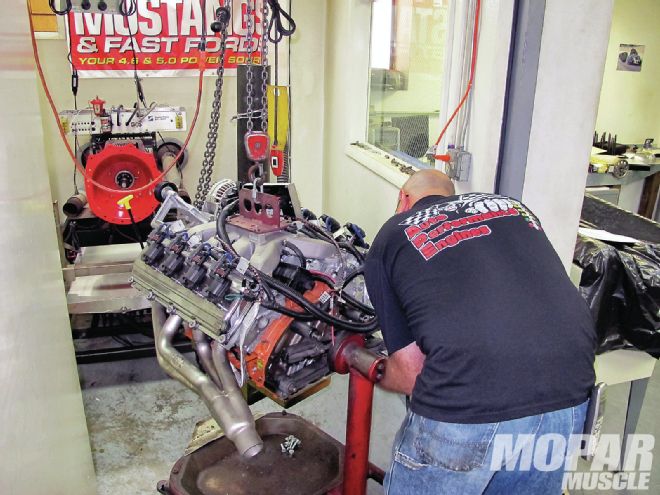
Since you’re reading Mopar Muscle, you’re likely already convinced that the Chrysler Corporation produced some of the best muscle cars in automotive history. You’re also likely of the opinion that Mopar engines and drivetrain components were second to none in terms of power and durability. While there’s no doubt that Mopars of the past were ahead of their time in terms of power and styling, we also feel that modern Mopars hold their own against competitors as well. In fact, even the off-brand editorial staff around our office agrees that the new Dodge Challenger really hit the mark, and the general consensus is that when compared to the Camaro and Mustang, the Challenger is the best-looking car of the three.
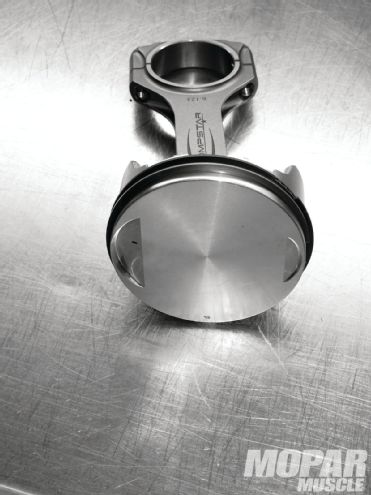
In terms of engines, late-model Mopars are equipped with some of the most efficient and powerful in the industry, and their latest version of the Hemi is the cream of the crop. Of course the Hemi engine is nothing new, as Chrysler introduced the design more than a half century ago. Since then, the Hemi has been revered as the ultimate in V-8 power. The second generation of the Hemi engine still rules the top classes of drag racing, and in certain classes like Super Stock, an entire class is dedicated to cars powered by this engine. The latest version is also called the Hemi, and has many of the same features of previous versions along with some serious improvements.
The term Hemi comes from the word hemispherical, which is the shape of the combustion chamber in the first and second generation engines. The third-generation Hemi has a similarly shaped combustion chamber, though it is arguably semi-hemispherical as it contains quench areas around the edges. The real advantage of the Hemi design is not so much the combustion chamber, but the valve orientation. With the intake valve canted, and close to the intake manifold, and the exhaust valve directly below it, the path of the air and fuel is unencumbered and ideal for flow through the cylinder head. The third generation Hemi shares this valve orientation with earlier versions, but has some advantages that help power and efficiency.
01 The 5.7 Hemi might have semi-hemispherical combustion chambers, but it does have the same valve orientation as earlier versions of the Hemi engine. Pistons are not domed like first and second generation Hemis, but rather flat-top. ">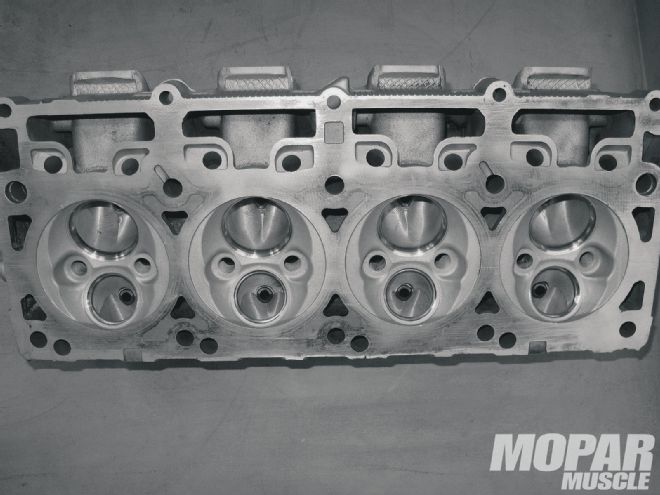 <strong>01</strong> The 5.7 Hemi might have semi-hemispherical combustion chambers, but it does have the same valve orientation as earlier versions of the Hemi engine. Pistons are not domed like first and second generation Hemis, but rather flat-top.
02 The late-model Hemi has an 8-bolt crankshaft, but early Hemi flywheels won’t work. We called Centerforce and ordered the specific flywheel we needed to dyno this engine. ">
<strong>01</strong> The 5.7 Hemi might have semi-hemispherical combustion chambers, but it does have the same valve orientation as earlier versions of the Hemi engine. Pistons are not domed like first and second generation Hemis, but rather flat-top.
02 The late-model Hemi has an 8-bolt crankshaft, but early Hemi flywheels won’t work. We called Centerforce and ordered the specific flywheel we needed to dyno this engine. ">
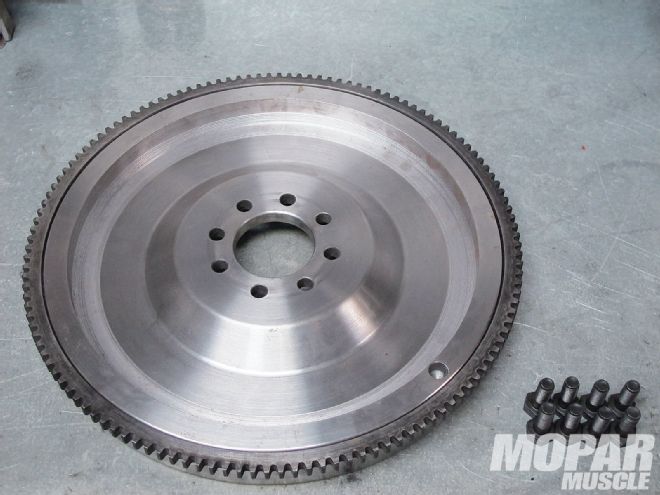 <strong>02</strong> The late-model Hemi has an 8-bolt crankshaft, but early Hemi flywheels won’t work. We called Centerforce and ordered the specific flywheel we needed to dyno this engine.
<strong>02</strong> The late-model Hemi has an 8-bolt crankshaft, but early Hemi flywheels won’t work. We called Centerforce and ordered the specific flywheel we needed to dyno this engine.
Modern Hemi engines utilize a hydraulic roller camshaft, aluminum cylinder heads, and are fuel injected. These features, along with a well-designed oil system that returns oil to the pan without contaminating the rotating assembly, help the modern Hemi achieve power, efficiency, and drivability that earlier Hemis could only dream about. Anyone who’s driven a car powered by the second generation 426 Hemi knows that it was a beast with a rough idle, cantankerous manners, a peaky power band, and an appetite for fuel. Conversely, the modern Hemi makes more power per cubic inch, while idling smoothly, sipping fuel, and providing ample torque and horsepower throughout the rpm band.
The initial version of the third-generation Hemi displaced 345-inches, which converts to 5.7 liters, and was only available in Dodge Ram pickup trucks. In 2005 the Hemi was introduced in passenger cars, still displacing 5.7 liters. Power was rated at 345 horsepower back then, and the current 5.7 Hemi produces as much as 375 horsepower. We got our hands on a 5.7 liter Hemi crate engine that was offered by Mopar Performance early in the production run. The engine came with a Mopar Performance computer to run the ignition system, as well as a Holley 600-cfm carburetor matched to the engine. Unfortunately there weren’t conversion mounts, headers, or oil pans available back then, and the car we planned to install the Hemi in was sold by the owner.
07 This engine came with a Holley 600-cfm carburetor that was specifically designed for the 5.7-liter crate engine. Installing this carburetor netted an improvement in both peak and average torque and horsepower. ">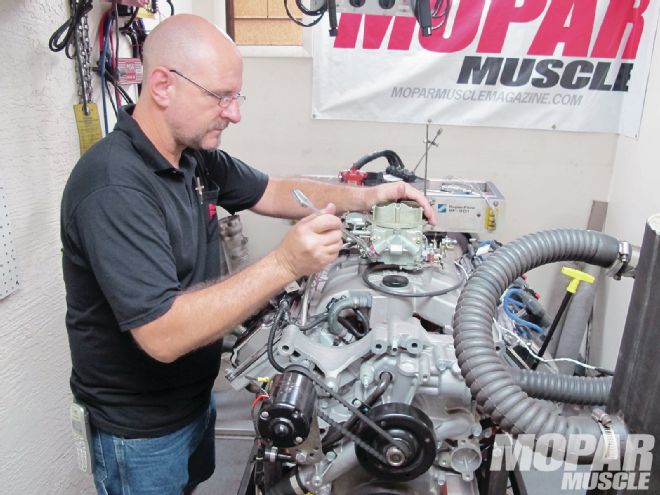 <strong>07</strong> This engine came with a Holley 600-cfm carburetor that was specifically designed for the 5.7-liter crate engine. Installing this carburetor netted an improvement in both peak and average torque and horsepower.
<strong>07</strong> This engine came with a Holley 600-cfm carburetor that was specifically designed for the 5.7-liter crate engine. Installing this carburetor netted an improvement in both peak and average torque and horsepower.
So with a 5.7 Hemi sitting in our warehouse, and a dyno just up the road at Auto Performance Engines, we decided to see how the late model Hemi compares to earlier versions, and use this Hemi to test some of the many parts available for the third-generation Hemi. This month, we’ll show you what it took to get the Hemi hooked up to the dyno, and perform some tuning to the engine and test a couple of different carburetors. You’ll be surprised how much this Hemi has in common with classic Mopar V-8 engines, and the aftermarket has certainly embraced the new Hemi by supplying a great variety of parts for it. In fact, it’s now pretty easy to install the late-model Hemi into earlier Mopar body styles, and we’re starting to see more and more of these conversions at car shows and events around the country.
For a stock engine, our Hemi performed very well on the dyno, and made good power with a relatively small carburetor. This engine has a smooth idle, good torque and horsepower, and is going to be a great starting point for future modifications. Our dyno numbers were better than those advertised by Chrysler, and we’re sure the Hemi has more in it. In fact, we’ve already ordered a trio of camshafts from Crane Cams to test in a future article. Check out the dyno sheets, and be sure to watch future issues of Mopar Muscle as we modify this engine and see what kind of power we can tweak from this 5.7 Hemi. To see videos of this Hemi running on the dyno at Auto Performance Engines, be sure to log onto our website, www.moparmuscle.com.
14 We’re looking forward to modifying this Hemi and performing further dyno testing, and already have three different camshafts from Crane Cams to test in this engine. Look for our camshaft testing as well as other modifications in future issues of Mopar Muscle. ">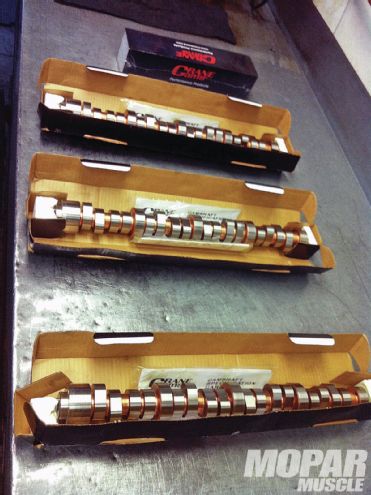 <strong>14</strong> We’re looking forward to modifying this Hemi and performing further dyno testing, and already have three different camshafts from Crane Cams to test in this engine. Look for our camshaft testing as well as other modifications in future issues of Mopar Muscle.
<strong>14</strong> We’re looking forward to modifying this Hemi and performing further dyno testing, and already have three different camshafts from Crane Cams to test in this engine. Look for our camshaft testing as well as other modifications in future issues of Mopar Muscle.
Chrysler 5.7 Hemi Bore 3.91 inches (99.5mm) Stroke 3.58 inches (90.9mm) Displacement 345 cubic inches (5654cc) Compression Ratio 9.6:1 Firing Order 1-8-4-3-6-5-7-2 Fuel octane required 91 minimum (93 octane used for testing) Oil Capacity 7 quarts Oil Grade 5W20 Weight 560 pounds (approx.) fully dressed Engine Control Module Mopar Performance PN P4510816 Wiring Harness Mopar Performance PN P4510357